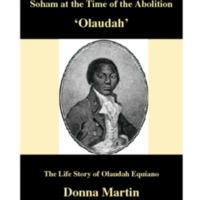
Soham at the Time of the Abolition
Soham Village College partnered with Soham Action 4 Youth (SA4Y) and Soham Museum in a project to record Soham at the Time of the Abolition, to commemorate the bicentenary and celebrate the life of Olaudah Equiano. Equiano, otherwise known as Gustavus Vassa, was the former slave who became an antislavery campaigner in the 18th century. His connection to the Cambridgeshire town of Soham is in his marriage to a local woman, Susannah Cullen, at St Andrew’s Church. Both of his daughters were born and baptised in the town. The research aspect of the project including mapping the town of Soham as it was in the 18th century, the results of which were published in a book by Mac Dowdy. 'Olaudah: The Life Story of Olaudah Equiano' was written by Donna Martin.
Several community events took place during the course of 2007 and 2008, including a re-enactment of Equiano’s wedding at St Andrew's Church in Soham, performed by Soham Village College theatre group Stage Chance, in partnership with Momentum Art’s Untold Stories Arts and Heritage Project. The event also comprised several speakers and performances of African dance and drumming, and the launch of a book by Angelina Osborne about the life of Joanna Vassa, Equiano’s only surviving daughter. A permanent plaque to Olaudah Equiano was unveiled in the church. The project also featured an exhibition of African art and portraits of Equiano by Soham residents and young people.
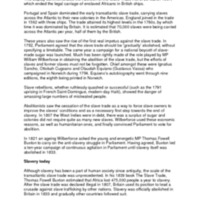
Thomas Fowell Buxton and the Anti-Slavery Movement
This small exhibition at Norwich Castle was part of the Norfolk's Hidden Heritage project. It included portraits of Norfolk-based Thomas Fowell Buxton, who was instrumental in the cause for abolition of British colonial slavery, and Amelia Opie, Norwich poet, author and anti-slavery campaigner. The exhibition also featured rare decorative items from the Castle collections relating to the consumption of tea and sugar, and 18th century books loaned by the Norfolk Heritage Centre. An events programme included lunchtime gallery talks and school activities.
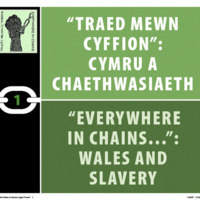
Everywhere in Chains: Wales and Slavery
Everywhere in Chains was an umbrella project created for the bicentenary commemorations in 2007, by a collaboration between Amgueddfa Cymru - National Museum Wales, the National Library of Wales, University of Wales, Bangor and CyMAL: Museum Archives and Libraries Wales (part of the Welsh Assembly Government). An exhibition explored Welsh involvement in slavery, especially focusing on the transatlantic slave trade and its abolition, the Black presence in Wales, and legacies of slavery. This was shown at the National Waterfront Museum in Swansea from May to November 2007 before touring to Wrexham County Borough Museum. The touring version of the exhibition was funded by the Welsh Assembly Government. The exhibition in Wrexham included discussion of the painting 'A Negro Coachboy', thought to commemorate a black servant of John Meller, owner of the Erddig estate in the 18th century.
Alongside the exhibition, the Everywhere in Chains programme also included lectures, formal learning activities and performances. An educational pack was produced by CyMAL and distributed to every school in Wales in 2009-2010. A community project created a forum in which participants from many cultural backgrounds could voice their ideas about enslavement. The Everywhere in Chains Community Heritage Toolkit captured the learning from this project. The toolkit, launched in 2009, was produced to help individuals, groups and organisations to work with culture and heritage providers to undertake projects focused on the role of Wales in the transatlantic slave trade and issues of modern slavery.
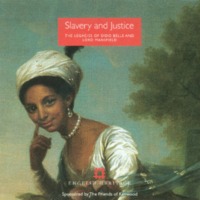
Slavery and Justice: The Legacies of Dido Belle and Lord Mansfield
Kenwood House in North London is closely connected to the history of the slave trade through the lives of two of its former inhabitants. Lord Chief Justice Lord Mansfield made a milestone ruling in 1772 towards abolition of the transatlantic slave trade. Dido Elizabeth Belle - born to an enslaved mother - is believed to have been Lord Mansfield's illegitimate great-niece. This exhibition by English Heritage, and sponsored by the Friends of Kenwood, explored their relationship, and the social dimensions of the British slave trade intertwined with the history of Kenwood. Visitors to the exhibition were invited to leave a creative literary response. The Wall of Words, a literary mural in the form of a poem inspired by the recorded responses, was created by Beyonder, a multimedia artist and educator.
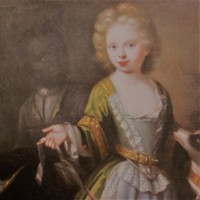
Revealed: Luxury Goods and the Slave Trade
Remembering Slavery 2007 was a regional initiative involving museums, galleries and other cultural organisations across the North East of England in a programme of exhibitions, events, performances, lectures and activities to explore the themes of slavery and abolition.
As part of the initiative, the Bowes Museum in Barnard Castle exhibited art objects from its collection, which traced the European demand for luxury goods linked to the system of plantation slavery, such as tobacco, sugar and indigo. For example, the exhibition included a number of sugar moulds and designs, alongside tobacco graters and tins. The recently conserved 'Girl with a Dog' by Philip Vilain (c. 1708) was also on display; the painting features a black servant faded into the background, revealing of eighteenth-century British society's racial divisions.